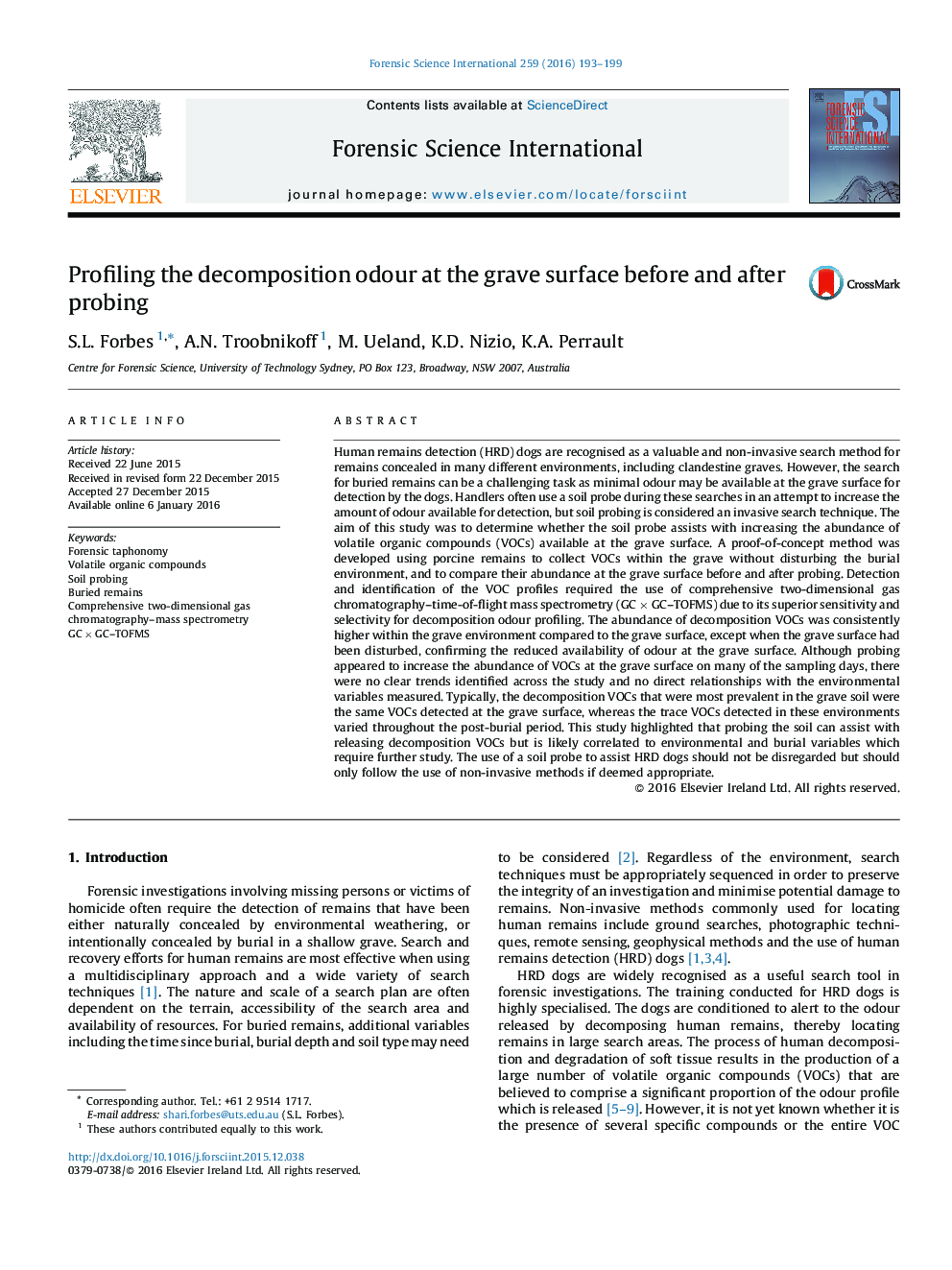| کد مقاله | کد نشریه | سال انتشار | مقاله انگلیسی | نسخه تمام متن |
|---|---|---|---|---|
| 6551878 | 160419 | 2016 | 7 صفحه PDF | دانلود رایگان |
عنوان انگلیسی مقاله ISI
Profiling the decomposition odour at the grave surface before and after probing
ترجمه فارسی عنوان
تشخیص بوی تجزیه در سطح قبر قبل و بعد از آزمایش
دانلود مقاله + سفارش ترجمه
دانلود مقاله ISI انگلیسی
رایگان برای ایرانیان
کلمات کلیدی
موضوعات مرتبط
مهندسی و علوم پایه
شیمی
شیمی آنالیزی یا شیمی تجزیه
چکیده انگلیسی
Human remains detection (HRD) dogs are recognised as a valuable and non-invasive search method for remains concealed in many different environments, including clandestine graves. However, the search for buried remains can be a challenging task as minimal odour may be available at the grave surface for detection by the dogs. Handlers often use a soil probe during these searches in an attempt to increase the amount of odour available for detection, but soil probing is considered an invasive search technique. The aim of this study was to determine whether the soil probe assists with increasing the abundance of volatile organic compounds (VOCs) available at the grave surface. A proof-of-concept method was developed using porcine remains to collect VOCs within the grave without disturbing the burial environment, and to compare their abundance at the grave surface before and after probing. Detection and identification of the VOC profiles required the use of comprehensive two-dimensional gas chromatography-time-of-flight mass spectrometry (GCÂ ÃÂ GC-TOFMS) due to its superior sensitivity and selectivity for decomposition odour profiling. The abundance of decomposition VOCs was consistently higher within the grave environment compared to the grave surface, except when the grave surface had been disturbed, confirming the reduced availability of odour at the grave surface. Although probing appeared to increase the abundance of VOCs at the grave surface on many of the sampling days, there were no clear trends identified across the study and no direct relationships with the environmental variables measured. Typically, the decomposition VOCs that were most prevalent in the grave soil were the same VOCs detected at the grave surface, whereas the trace VOCs detected in these environments varied throughout the post-burial period. This study highlighted that probing the soil can assist with releasing decomposition VOCs but is likely correlated to environmental and burial variables which require further study. The use of a soil probe to assist HRD dogs should not be disregarded but should only follow the use of non-invasive methods if deemed appropriate.
ناشر
Database: Elsevier - ScienceDirect (ساینس دایرکت)
Journal: Forensic Science International - Volume 259, February 2016, Pages 193-199
Journal: Forensic Science International - Volume 259, February 2016, Pages 193-199
نویسندگان
S.L. Forbes, A.N. Troobnikoff, M. Ueland, K.D. Nizio, K.A. Perrault,
